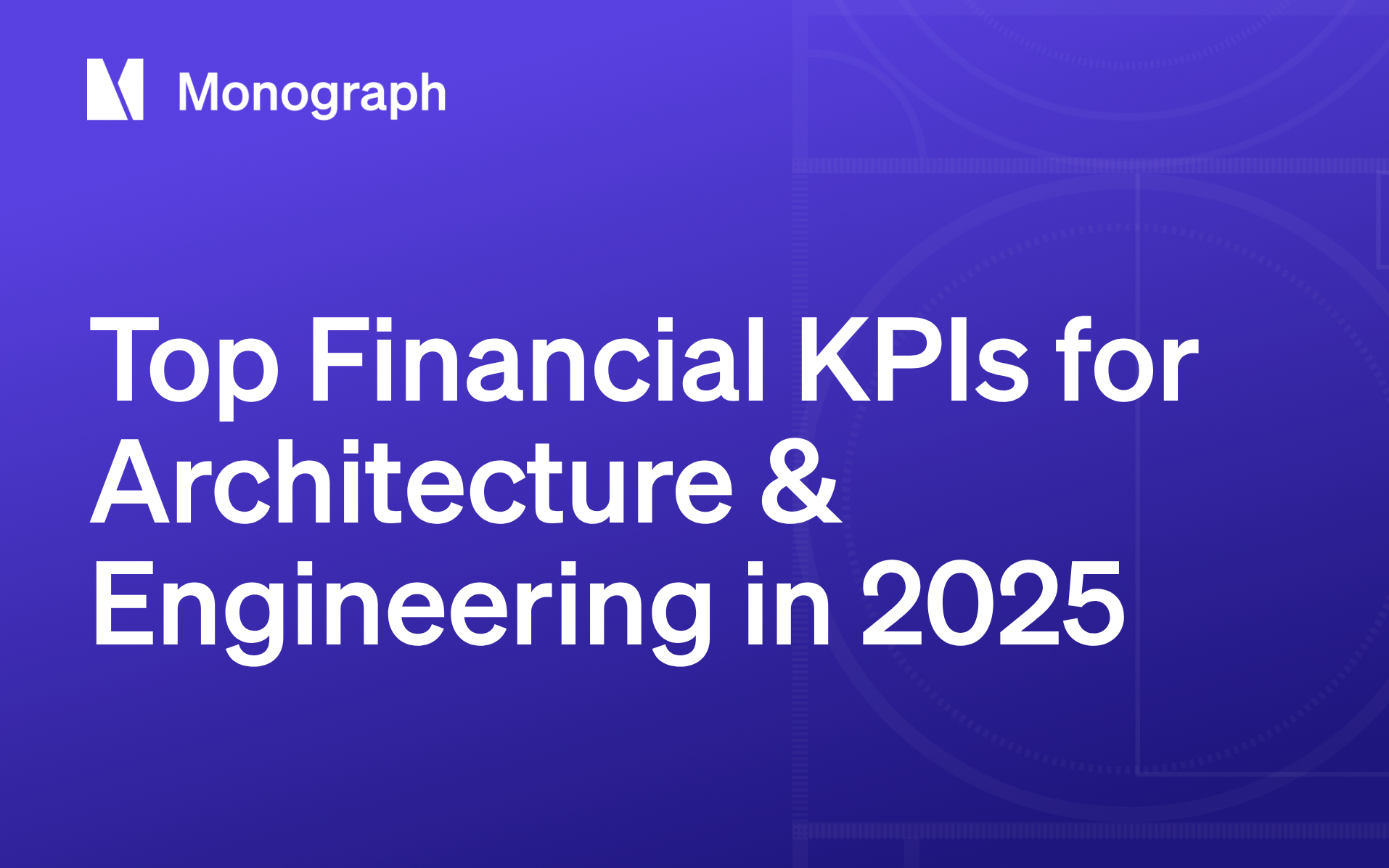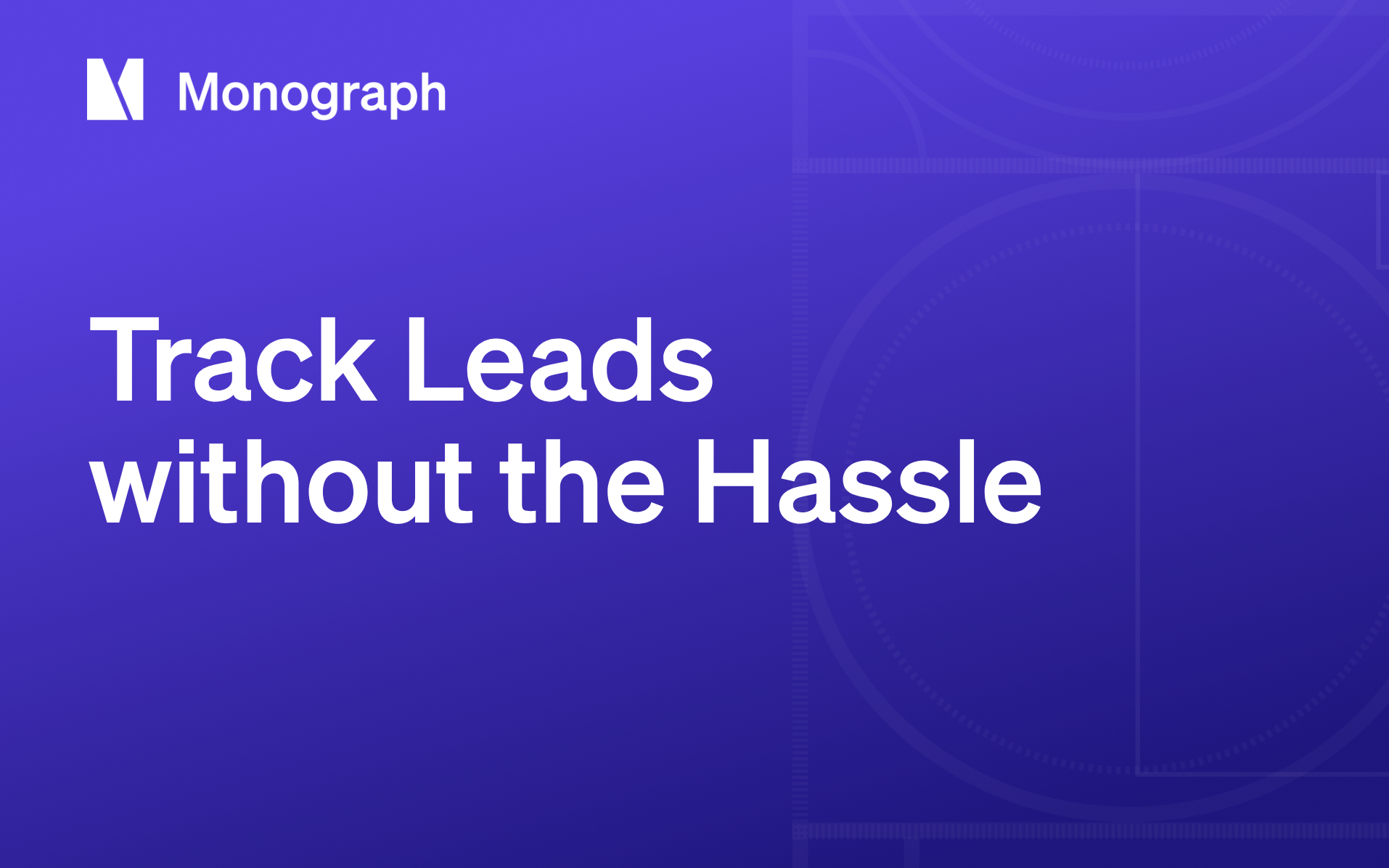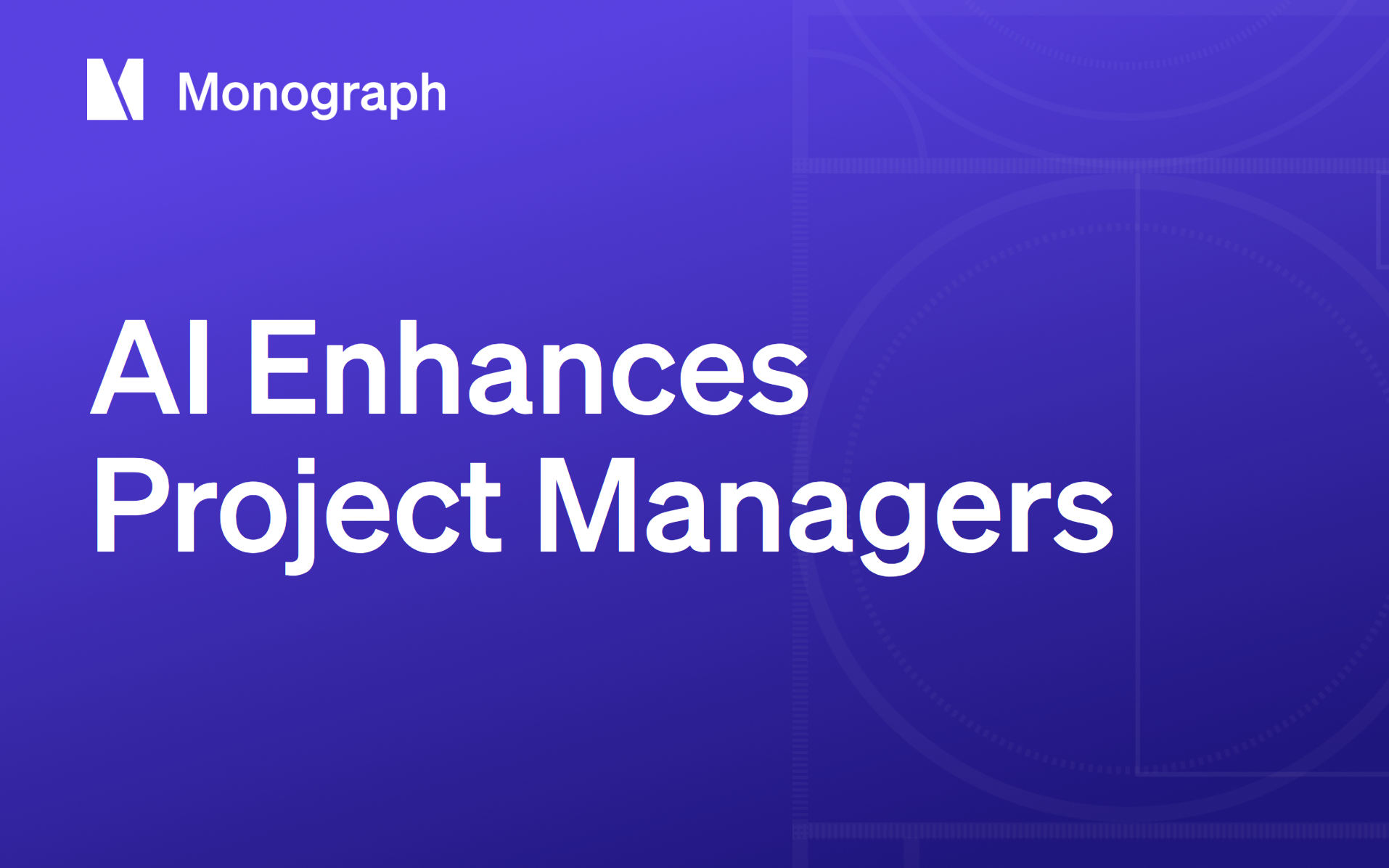Contents
Material costs have seen moderate increases or stabilized in 2024, and invoice payment times remain variable depending on region and sector. Even when work is steady, the average A&E firm bills only 81% of its staff's time. These realities compound fast: thinner margins, unpredictable cash, and a project pipeline that never feels secure.
The answer isn't another spreadsheet. You need financial visibility that works like a building's structural system, invisible until you need it, but essential for everything else to function. The twelve KPIs that follow give you that foundation. Net profit margin, utilization rate, backlog-to-revenue, and nine others act as your early warning system, telling you when to raise fees, hire, or push collections. With integrated tracking through platforms like Monograph, these numbers become your compass instead of just data points.
1. Net Profit Margin
You can't tell whether a project-based business is healthy until you measure how much revenue remains after every salary, consultant bill, and software subscription is paid. That's exactly what net profit margin reveals. Take your firm's net profit and divide it by net revenue, then multiply by 100: Net Profit ÷ Net Revenue × 100.
Net profit margins remain a core challenge for architecture & engineering firms. In 2025, the typical A&E firm lands between 10-20 percent, with top-quartile practices nudging closer to 22 percent. Anything slipping below high single digits usually means overhead is creeping up, fees are too thin, or projects are bleeding hours you never see on the invoice.
The number itself matters less than how quickly you can see it. When your costs live in QuickBooks and your hours live in timesheets, you're stuck waiting until month-end to know where you stand. Monograph pulls those same data streams into a single dashboard and updates margins in real time.
Real-time visibility transforms how you manage profitability:
- You know by Tuesday while you still have a chance to renegotiate scope
- You can adjust staffing before problems compound
- You can chase change orders while they're still relevant
- You discover wins and losses in weeks, not months
Watch the trend line. A steady margin above 15 percent signals you're pricing accurately, controlling scope, and protecting the cash you need to fund new hires and better design tools.
2. Operating Overhead Ratio
Building on profit margin tracking, the Operating Overhead Ratio measures exactly how much of every revenue dollar indirect costs claim: Indirect/Overhead Expenses ÷ Net Revenue. Rent, insurance, and admin salaries consume revenue whether projects succeed or fail, making this fraction your firm's survival margin.
The latest BQE 2025 A&E Benchmarking Reports identify "overhead control as a top concern as firms scale," because unchecked overhead destroys bidding flexibility and forces larger cash buffers just to stay solvent. Top-quartile firms keep overhead below 50% of revenue and treat any sustained increase as crisis-level priority.
The ratio drives pricing strategy directly: if overhead claims 40¢ of every dollar, your fees must recover at least that amount before profit enters the equation. Monthly tracking prevents under-pricing long-duration work or hiring ahead of revenue. Monograph pulls every indirect expense from QuickBooks automatically, so the ratio updates in real time alongside project data. When overhead starts climbing, you see it before the next proposal goes out and can adjust while there's still room to design profitably.
3. Utilization Rate
Think of utilization like a building's structural grid. If it's off, nothing else lines up. While overhead controls your cost foundation, utilization tracks the percentage of total hours that end up on client invoices: billable hours ÷ total hours × 100. This metric shows how much of your team's time actually generates revenue rather than getting lost in coordination, RFIs, or waiting for approvals.
For 2025, national averages hover around 81 percent, while top-quartile firms push 85-90 percent. Drop below 75 percent and you're paying people to wait for work. Push north of 90 percent for too long and burnout shows up in the punch list through mistakes, turnover, and stalled innovation.
Weekly monitoring proves essential here. Several successful firms have reported significant improvement through better visibility. Monograph's scheduler lays out everyone's hours like a clean reflected-ceiling plan, and the auto-filled timesheets lock those hours to actual projects. The moment a designer's week tilts toward non-billable coordination meetings, the dashboard flags it, giving you time to redirect effort or adjust fees before the month slips away. Get utilization right and profit follows naturally. You're selling the hours you've already bought.
4. Realization Rate
Think of your fee schedule as a well-detailed section cut: every line must translate into revenue or the structure collapses. While utilization ensures your team stays busy, realization rate tells you how much of that time actually makes it into the bank. It's calculated as Billed Hours ÷ Billable Hours × 100. If your team logged 1,000 billable hours but you only invoiced 930 of them, your realization rate is 93 percent.
A dip flags hidden leaks including scope creep you didn't price, write-offs you granted too quickly, or discounts that erode trust in your value. For 2025, the bar is high. National data puts the average realization rate at roughly 95 percent, while top-quartile A&E firms push past 97 percent, proving that near-perfect capture is possible when scope discipline meets decisive billing.
You can't afford to wait for month-end to discover a leak. Platforms built for A&E practice connect timesheets to draft invoices in real time. As your team logs hours, you immediately see what's on track to be billed and what's slipping into the shadows. That live feedback gives you room to issue a change order today instead of apologizing for a write-off tomorrow, keeping margins intact without sacrificing relationships.
5. Labor Multiplier
The labor multiplier reveals the gap between what you pay your team and what the firm earns for their work. It's calculated as Net Labor Revenue ÷ Direct Salary Cost. That ratio tells you how many dollars of fee each payroll dollar returns. Industry surveys show that firms "struggle to align salary costs with fee structures," and when the multiplier drops below target ranges, profit follows.
For 2025, healthy A&E practices sit in the 2.80-3.10 range, with a 2.90 median across U.S. firms. Anything under 2.6 signals under-pricing or creeping overhead; push past 3.2 and you're capturing premium value.
Every project phase carries different staffing mixes, so integrated dashboards that align planned fees with logged hours by role in real time become critical. When a project architect's hours start outpacing budget, you see the multiplier drop before invoices go out. That gives you time to adjust scope, raise fees, or rebalance the team before it hits the bottom line.
6. Days Sales Outstanding (Average Collection Period)
If you're like most A&E principals, the lag between sending an invoice and seeing cash in the bank feels longer every month. Days Sales Outstanding (DSO) tells you exactly how long that wait is. The math is straightforward, Accounts Receivable ÷ Average Daily Net Revenue, but the implications for payroll and project funding run deep.
In 2025, architects in Canada waited an average of 45 days for payment, while some U.S. firms stretched to 73 days before a check cleared. Compare that to the healthy benchmark of roughly 34 days across high-performing practices. Once DSO creeps past 45 days, you're financing your clients' projects and burning working capital you could invest in staff or technology.
Real improvement starts at the invoice. When time entries flow straight into a Stripe-enabled invoice, clients can pay the moment they approve the PDF, shaving days off the cycle. An invoice status tracker flags slow payers so you can follow up before cash flow tightens. Keep DSO below 40 days. Cross the 60-day line and you're in the danger zone.
7. Backlog-to-Revenue Ratio
Think of backlog as the design schedule for your balance sheet. It shows how much work you've contracted and how long that work sustains operations. While DSO measures how quickly you collect earned revenue, the backlog-to-revenue ratio provides clear visibility into future work: Remaining Contracted Fees ÷ Annual Net Revenue.
A ratio above 1.0 means you have at least a year's worth of contracted work. Drop below 0.6 and you'll experience what the BQE 2025 A&E Benchmarking Reports call "booked work pressure," where projects finish faster than new ones start. When that number shifts, you either hire or market.
Several firms have shared their positive outcomes after implementing better backlog tracking systems. Here's how top-performing firms approach this challenge:
- They monitor phase-level progress through platforms like Monograph's MoneyGantt™
- They track remaining fees across multiple project phases simultaneously
- They flag potential scheduling conflicts before they impact delivery
When backlog tracking becomes automated rather than manual, problems surface immediately. For instance, when schematic design overruns eat into construction document fees, you see it as a red bar and can re-scope or add resources before the situation worsens. Healthy firms maintain nine to twelve months of revenue under contract. Less than six months signals trouble ahead; more than eighteen months can mask under-pricing if margins remain thin.
8. Project Profitability Index (PPI)
Think of the Project Profitability Index as the punch list for your bottom line. It tells you, in one glance, how much of every project dollar actually ends up as profit. You calculate it the same way you check a structural ratio, straightforward and unforgiving: Project Profit Margin (%) = (Project Profit ÷ Project Fee) × 100.
Industry surveys warn that "maintaining design time while avoiding project overruns is a core operational challenge," a tension every architect and engineer feels on deadline day. A strong PPI flags when you're beating that challenge; a weak one tells you scope creep, discounting, or mis-staffing is eating the job alive.
Healthy projects in 2025 typically net a 15-20% PPI, with top-quartile firms pushing past 22%. Anything dipping below 10% deserves an immediate post-mortem. Phase-level cost-versus-fee tracking makes those red flags impossible to miss. Automated alerts ping you before the damage spreads, giving you space to renegotiate scope or reallocate staff long before the final invoice locks in a loss.
9. Revenue Growth Rate
Revenue growth rate tells you how fast your top line is expanding year over year, a simple but essential gauge of whether the firm is moving forward or stuck in place. You calculate it by dividing the difference between this year's net revenue and last year's by last year's figure, then multiplying by 100: (Current Year Net Revenue - Prior Year) ÷ Prior Year × 100.
In an industry where material costs spike unexpectedly and clients pause projects without warning, the firms that thrive are those that keep revenue moving upward even when market conditions shift. A healthy growth rate signals that you're expanding services, winning work in new sectors, and pricing projects to cover rising costs without losing clients.
Revenue growth rarely follows a predictable path. Trend dashboards that plot revenue month by month, layering in backlog and cash-flow projections help you identify seasonal patterns or sudden changes before they throw off annual targets.
The most successful A&E firms track growth across multiple dimensions to spot opportunities and risks early:
- Monthly revenue trends reveal seasonal patterns and market shifts
- Backlog analysis shows pipeline strength and scheduling conflicts
- Service line performance identifies which offerings drive the most profit
- Geographic or sector analysis highlights expansion opportunities
Firms using integrated platforms report up to 21 percent revenue increases in their first year, proof that real-time visibility drives better decisions and faster adjustments. For 2025, matching or exceeding that double-digit benchmark distinguishes firms that adapt from those that get left behind.
10. Proposal Hit Rate
Every hour you spend crafting a proposal is overhead until the client signs. The Proposal Hit Rate tells you how often that effort pays off. Calculate it with a single ratio: Proposals Won ÷ Proposals Submitted × 100.
This percentage transforms business development from guesswork into measurable discipline. The bid-to-win ratio is essential for profitable A&E firms because it connects marketing spend, staffing projections, and cash-flow forecasts. When the rate drops, you're burning time that could have been spent on billable work. When it climbs, overhead shrinks and future revenue becomes predictable.
Industry benchmarking studies show firm-wide averages around 45%, nearly one win for every two proposals, while top-quartile practices convert more than half. Tracking outcomes in CRM fields by client, sector, and fee type lets you slice results by project size or discipline. Over time, you'll identify which opportunities to pursue, which to price differently, and which to abandon before they drain your team's capacity.
11. Earned-vs-Planned Revenue Variance
You measure this KPI by subtracting planned revenue from the revenue you have actually earned on a project: Earned Revenue - Planned Revenue. The closer that number is to zero, the more accurately you forecasted scope, staffing, and fee.
Real-time visibility is everything here. When your numbers live in separate spreadsheets, the gap only shows up after the damage is done. Platforms built for A&E work bring the data together automatically: Monograph's MoneyGantt™ view layers a project's planned fee across the schedule, then shows how dollars move from planned through logged, invoiced, and finally paid in one continuous bar. A red segment appears the moment earned revenue lags behind plan, giving you days, or even weeks, to course-correct instead of scrambling at month's end.
Keeping variance tight protects more than the current project. Your firm-wide forecasts roll up from these numbers, so a small miss in one phase can snowball into cash shortfalls and erode client confidence. Think of project variance like structural deflection: small movements you can manage, but let them compound and you're looking at major repairs. The 2025 BQE A&E reports urge firms to keep the gap in single digits; once you see double-digit slippage, treat it as a structural crack demanding immediate attention.
12. Cash-Flow Forecast Accuracy
Cash-flow forecast accuracy measures how close your predicted cash position comes to reality, the difference between what you think you'll have and what actually lands in your bank account. Calculate it with: (Actual Cash Flow - Forecast) ÷ Forecast × 100.
A positive result means cash came in stronger than expected; negative means you overestimated. Either way, it shows the gap between your financial projections and reality. You feel this gap hardest when projects stall. Firms can't predict revenue when projects pause, leaving hiring plans, bonuses, and equipment purchases hanging in limbo. Accurate forecasts let you make those decisions with confidence instead of crossing your fingers.
Well-run A&E practices keep variance in single digits. Every percentage point beyond that creates room for panic. When month-over-month variance hits double digits, your billing schedule, payment terms, or workload projections need attention. Live forecasts that pull fees, payment schedules, reimbursables, and payroll data update as conditions change. When a client delays a milestone, you immediately see how that delay affects payroll two months out. This visibility lets you adjust expenses early, secure bridge financing, or accelerate new work instead of reacting to problems after they hit.
Turning 2025 KPIs into Action
When you track these 12 KPIs side by side, you finally see the full cross-section of your practice: budgets, projects, time, and clients all in one view. Those numbers aren't vanity metrics; they're early-warning sensors. A dip in utilization or a spike in days sales outstanding shows up before the damage spreads, giving you room to correct course rather than explain overruns after the fact. Make reviewing the dashboard with your team a quarterly habit. Shared visibility turns KPI targets into collaborative problem-solving instead of top-down edicts.
Integrated platforms built for A&E work replace hours of spreadsheet hunting with live insight, driving the 25% profit gains many firms report after switching to a unified system. You can't run a profitable A&E practice when critical data lives in scattered systems. Every day you spend piecing together utilization rates from Excel, project costs from QuickBooks, and cash flow from manual calculations is another day your competitors gain ground. The right platform transforms scattered data into actionable insights, showing you which projects are profitable, which teams are overutilized, and when cash will hit your account.
Track the KPIs that matter with a platform built for A&E firms. Book a demo with Monograph.
Frequently Asked Questions
What are the most important KPIs for architecture and engineering firms to track?
The essential KPIs for A&E firms fall into three categories: profitability (project profit margins, net multiplier, overhead rate), productivity (utilization rate by role, realization rate, billable vs. non-billable time), and cash flow (days sales outstanding, work-in-progress aging, accounts receivable turnover).
Start with utilization rate and project profitability. These two metrics alone will reveal 80% of your operational issues.
How long does it take to implement KPI software and start seeing results?
Implementation timelines vary significantly by platform. Purpose-built solutions like Monograph typically take 2-4 weeks to get fully operational. The key is choosing software that integrates with your existing workflows rather than forcing you to rebuild everything.
Will KPI software integrate with our existing QuickBooks setup?
Most modern KPI platforms offer QuickBooks integration, but the depth varies considerably. Look for two-way sync that eliminates double-entry. Your time entries should flow automatically into invoices, and payments should sync back to update project profitability in real-time.
Which KPIs should I focus on first if I'm just starting to track performance metrics?
Begin with three fundamental metrics: utilization rate, net profit margin, and days sales outstanding. These provide immediate insight into whether your team is productive, your projects are profitable, and your cash flow is healthy. Once these are stable, expand to project-level profitability and overhead ratio tracking.





